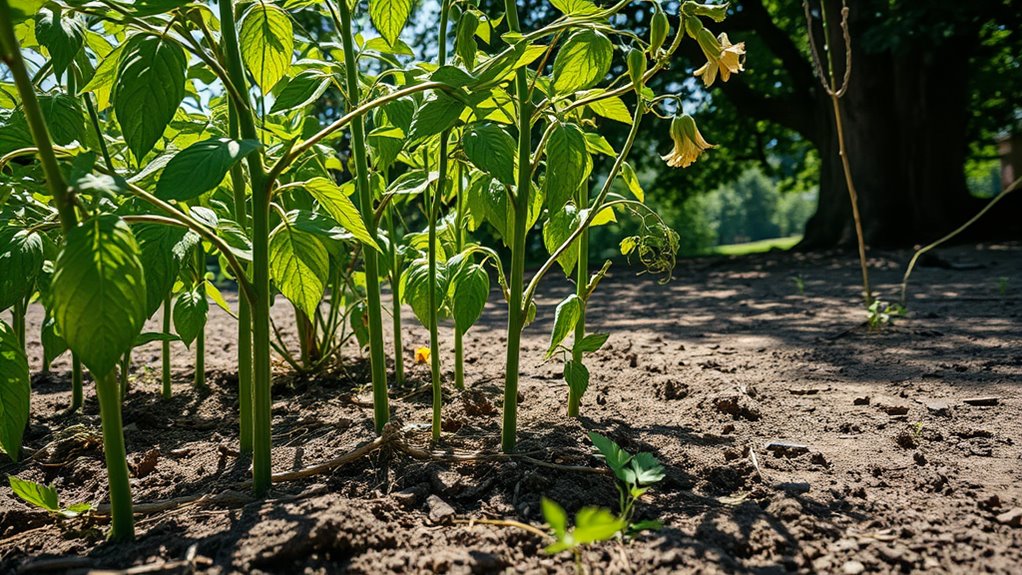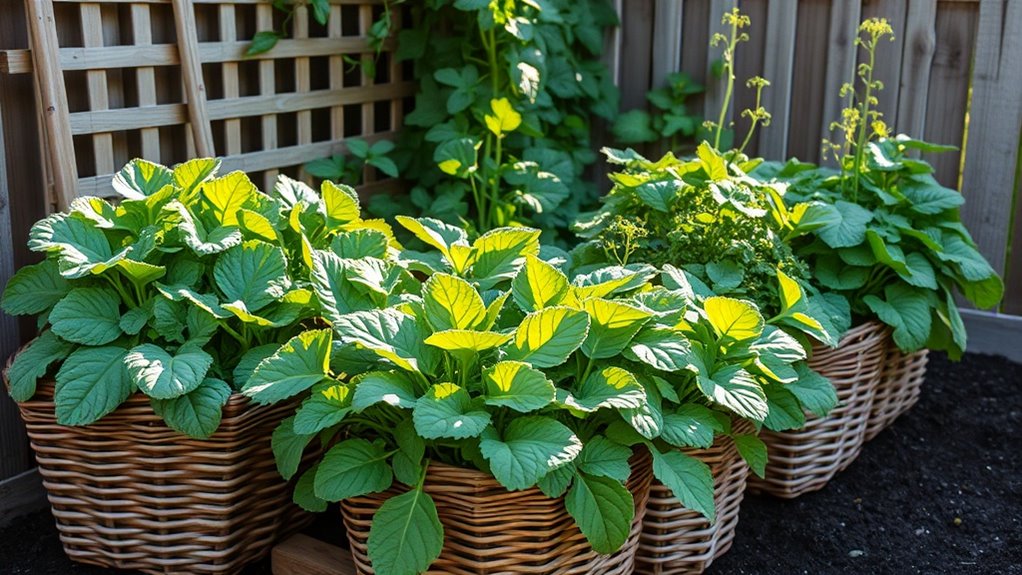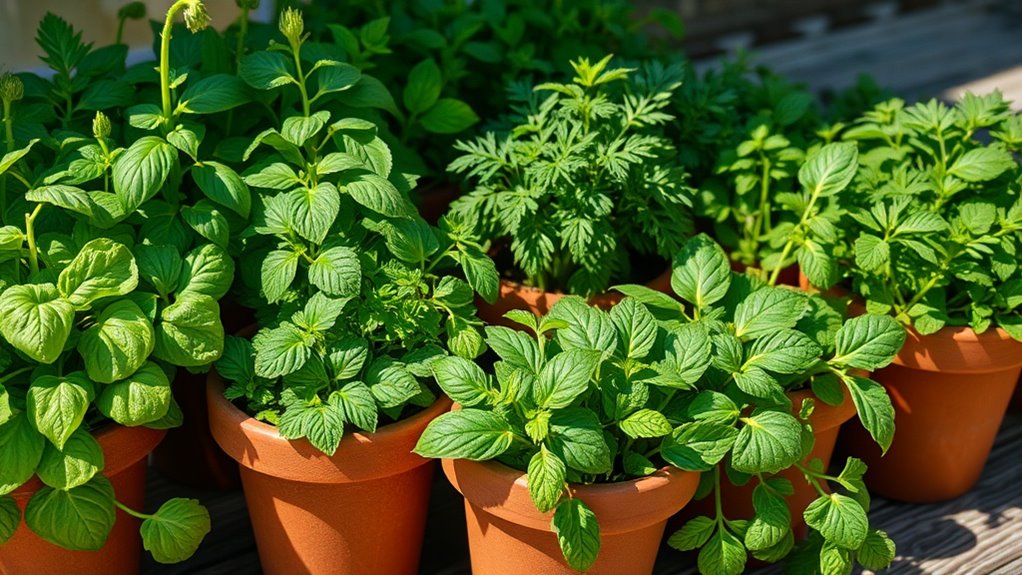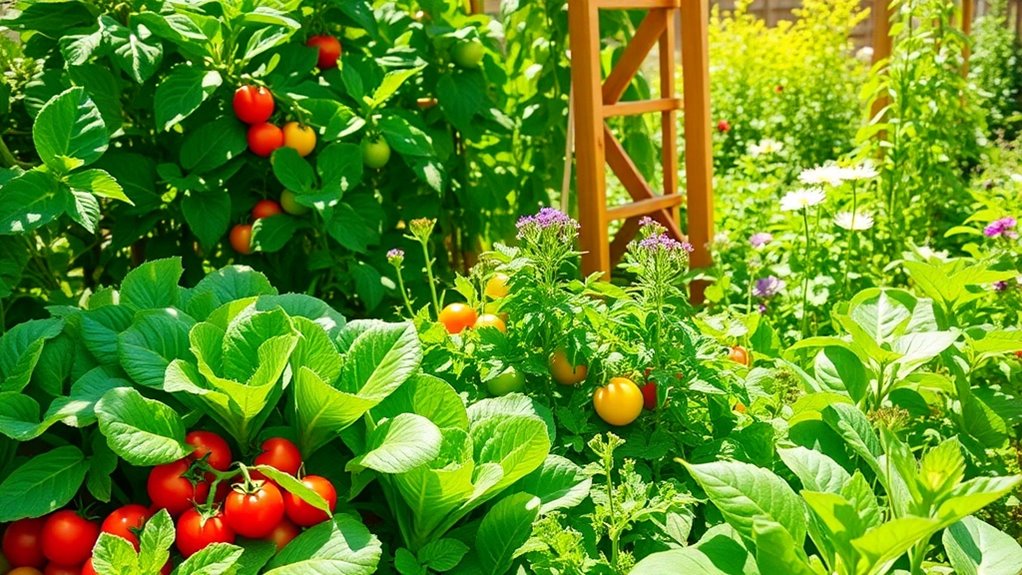Tomatoes Not Growing. Fix These 3 Common Mistakes First
It’s a coincidence that many gardeners share the same frustration when their tomatoes just won’t grow. Often, the reasons boil down to three common mistakes that can easily be corrected. Overwatering, poor soil quality, and inadequate sunlight can all hinder your plants’ progress. If you’re ready to uncover the solutions to these issues, you might just find the key to a thriving tomato crop.
Key Takeaways
- Ensure you are not overwatering, as this can lead to root rot and stunted growth in tomato plants.
- Check for underwatering symptoms like wilting and blossom drop, and adjust your watering routine accordingly.
- Maintain proper soil pH between 6.0 and 6.8 for optimal nutrient absorption by the plants.
- Provide 6 to 8 hours of direct sunlight daily; inadequate light can weaken stems and reduce fruit production.
- Regularly monitor for signs of nutrient deficiencies and amend soil with compost to improve fertility.
Overwatering or Underwatering
When it comes to growing tomatoes, striking the right balance in watering is crucial. Overwatering leads to root rot, stunted growth, and yellowing leaves, while underwatering causes wilting and blossom drop. You’ll need to monitor your soil moisture regularly. Stick your finger about an inch into the soil; if it’s dry, it’s time to water. Aim for consistent moisture, allowing the top inch of soil to dry out between waterings. By addressing these common tomato growing problems, you’ll foster healthier plants and ultimately improve your yield. Additionally, optimizing your watering practices can significantly enhance the juiciness of your tomatoes.
Poor Soil Quality
To ensure healthy tomato plants, assess your soil and consider these key factors:
- pH Level: Aim for a pH of 6.0 to 6.8 for optimal nutrient availability.
- Nutrient Content: Test for essential nutrients like nitrogen, phosphorus, and potassium.
- Soil Texture: Ensure a balanced mix of sand, silt, and clay for proper drainage and aeration.
- Organic Matter: Incorporate compost to improve soil structure and fertility.
- Drainage: Avoid waterlogged conditions that can suffocate roots and promote disease.
Additionally, soil preparation is crucial for enhancing the overall flavor of your tomatoes.
Inadequate Sunlight
How much sunlight do your tomato plants receive each day?
Ideally, they need 6 to 8 hours of direct sunlight for optimal growth.
Insufficient light can lead to weak stems, yellowing leaves, and poor fruit production.
If your plants are shaded by trees, buildings, or even other plants, consider relocating them or trimming back obstructions.
Using reflective materials can also enhance light exposure.
Monitor your plants for signs of inadequate sunlight, such as leggy growth or slow maturation.
Remember, adequate sunlight is crucial for photosynthesis, which fuels your tomato plants’ growth and fruit development.
Additionally, insufficient light exposure can significantly affect the overall health and yield of your tomato crop.
Don’t underestimate its importance!





